Abstract
Airborne Semliki Forest virus and T coliphages were inactivated at a considerably enhanced rate in open air compared with enclosed air. Open air exerts its maximum sterilizing activity on viruses contained in the smallest sized particles.
Full text
PDF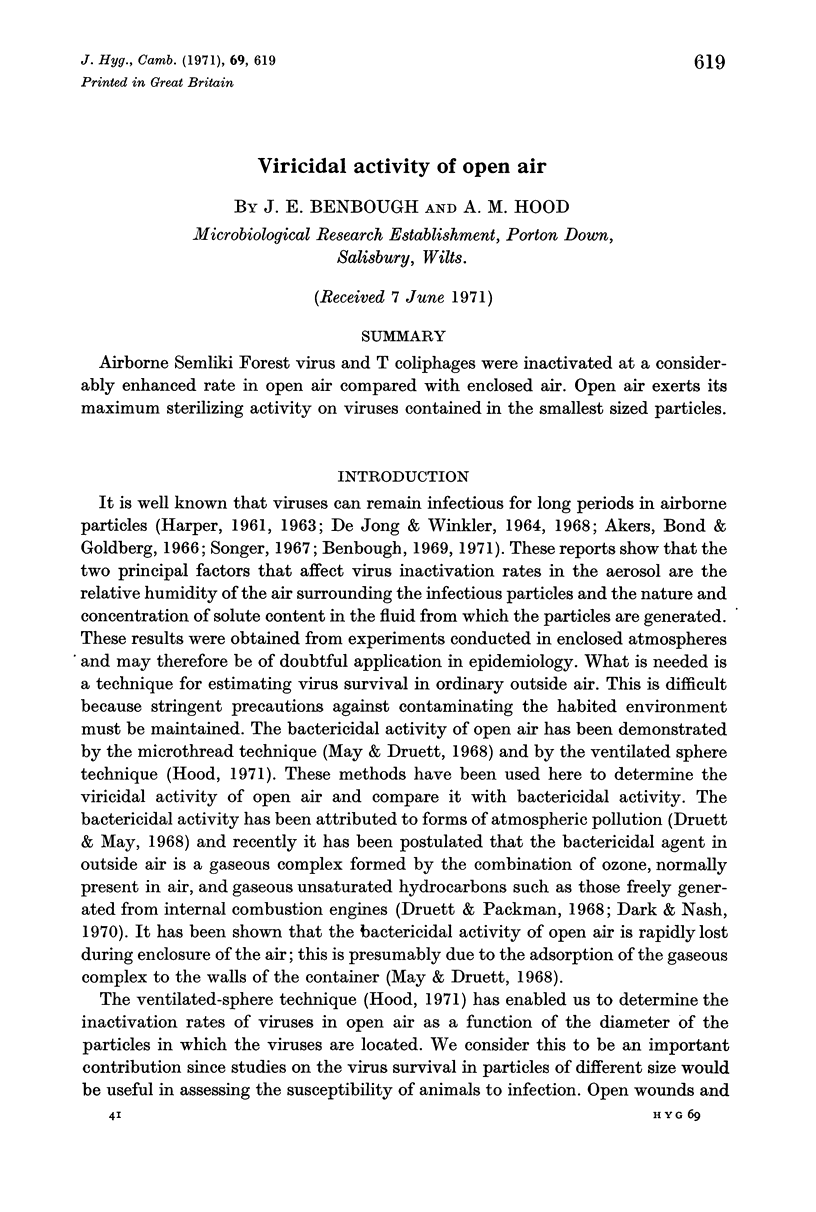
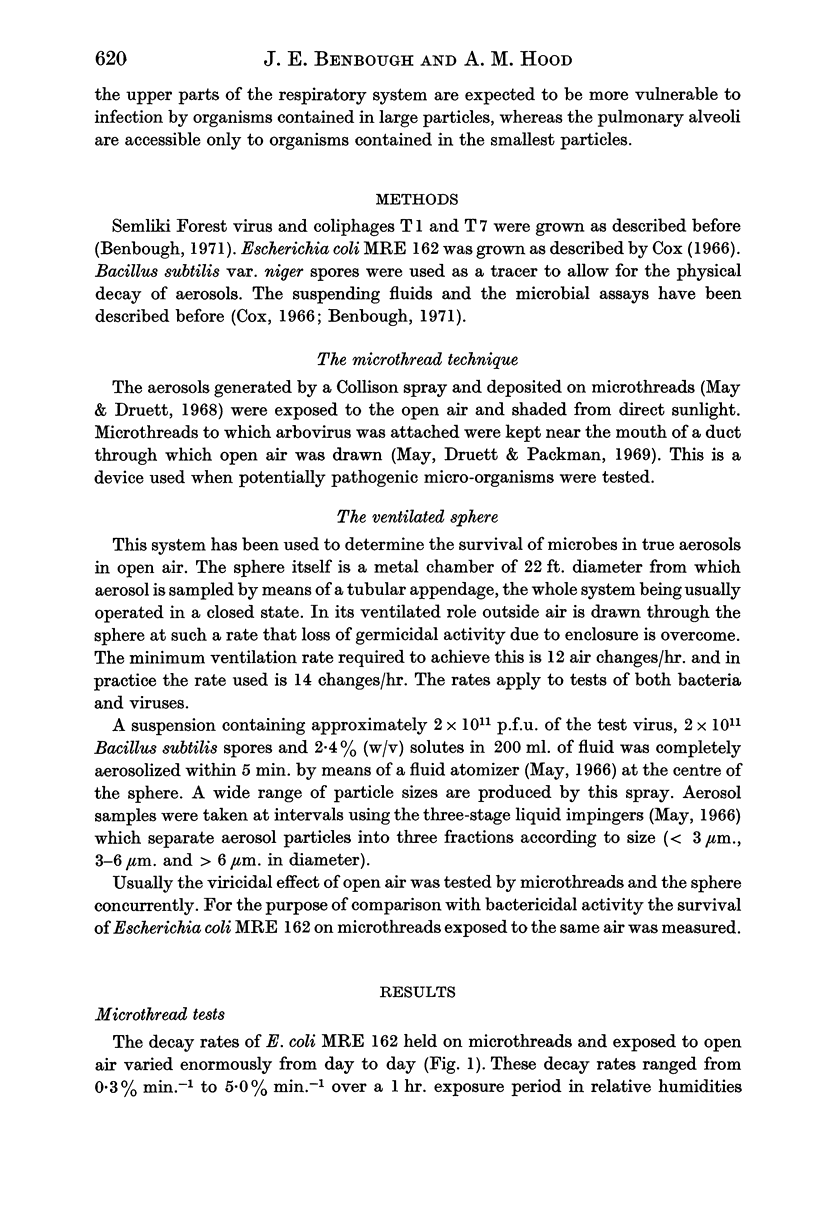
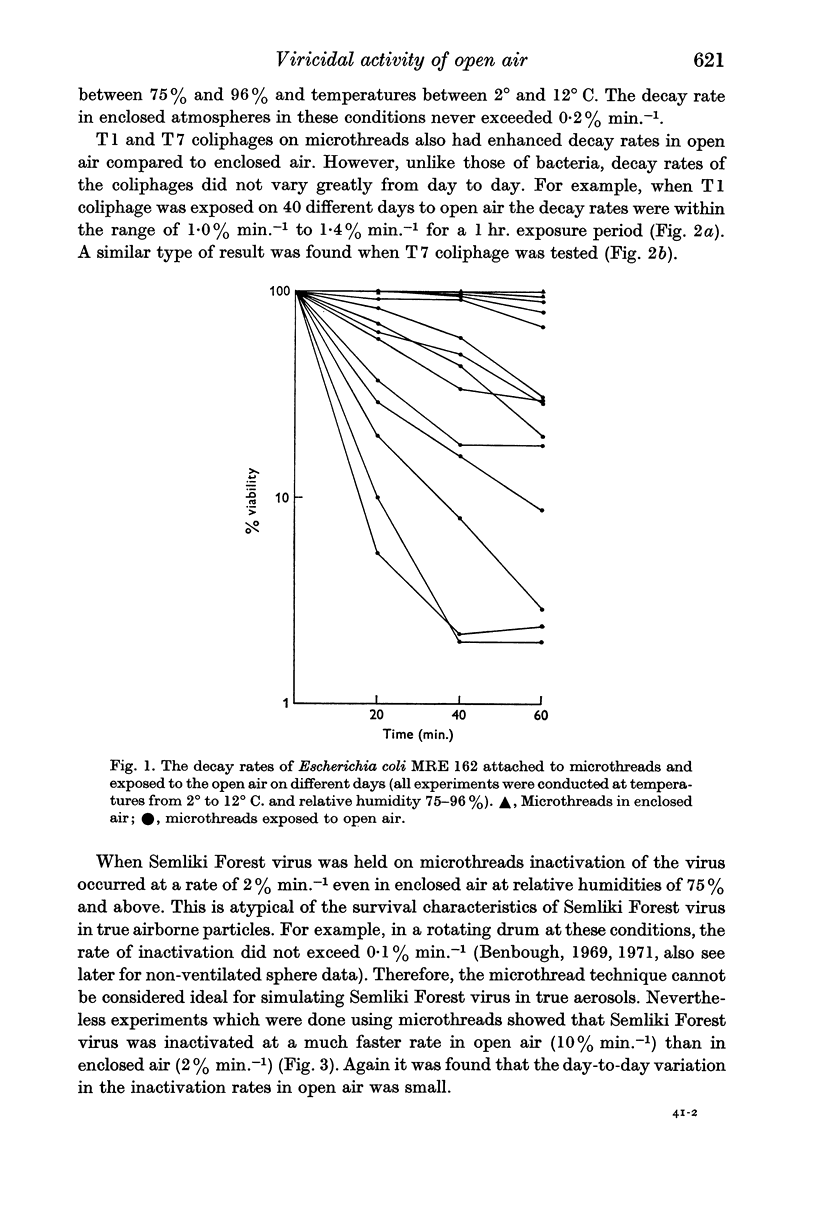
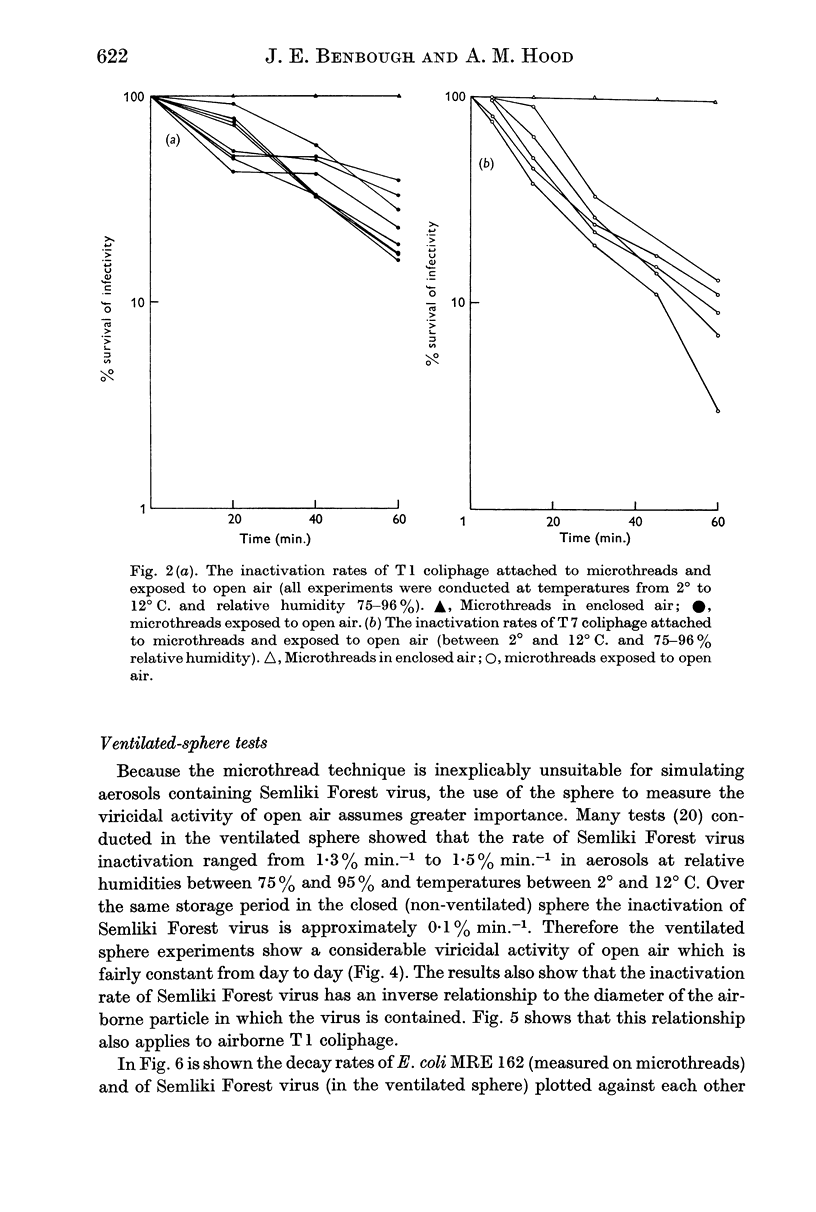
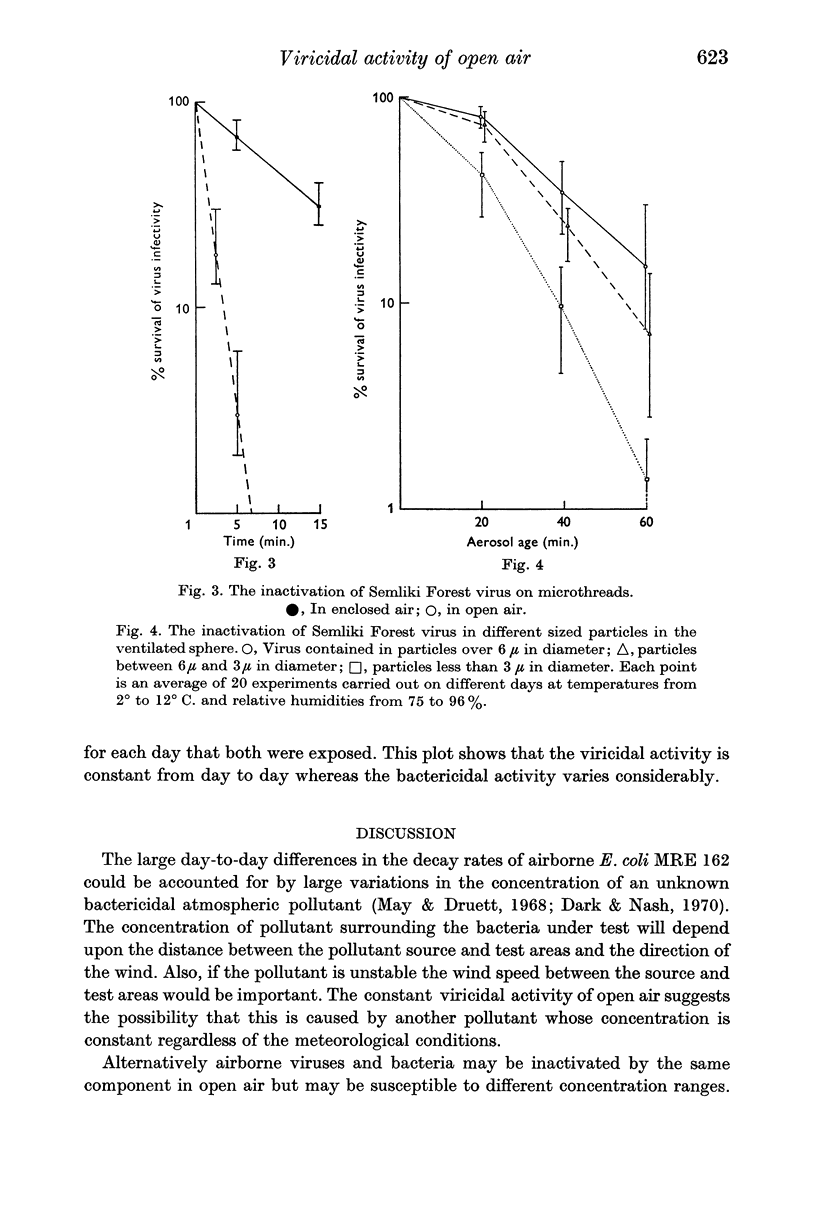
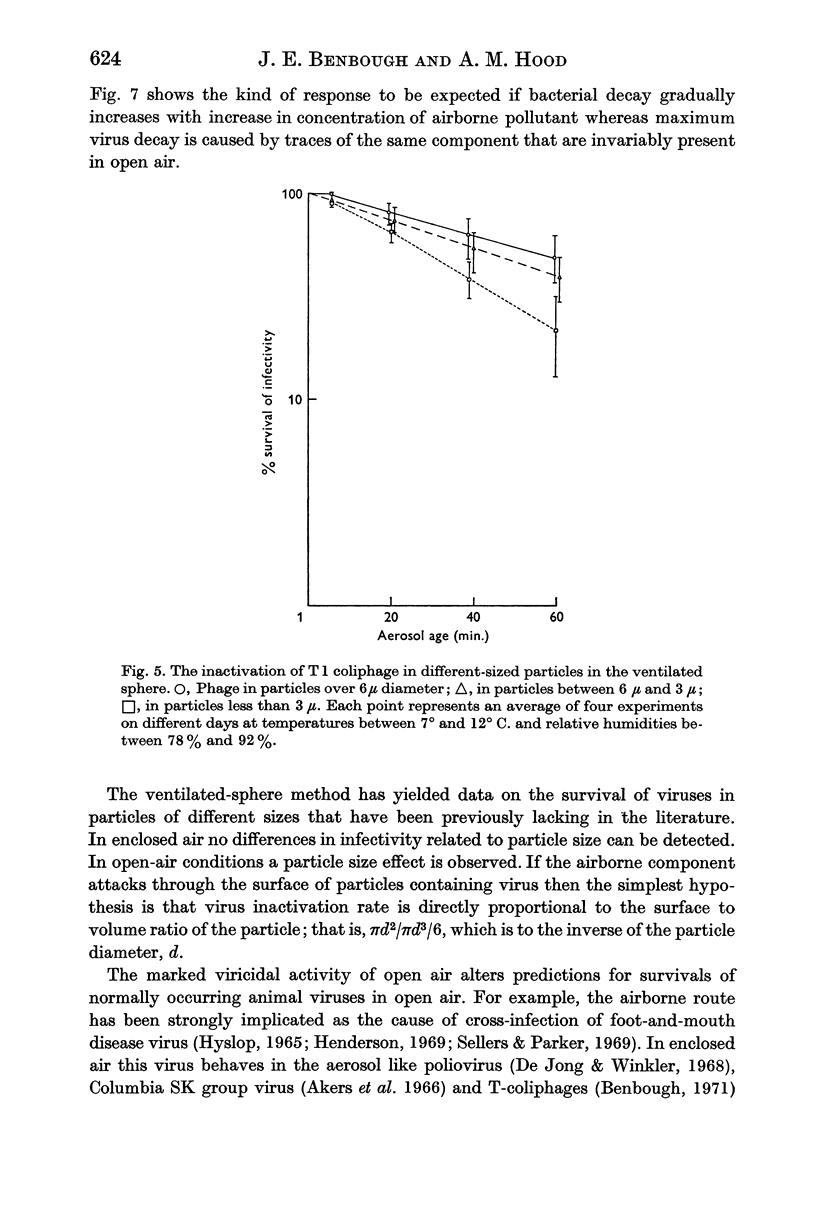
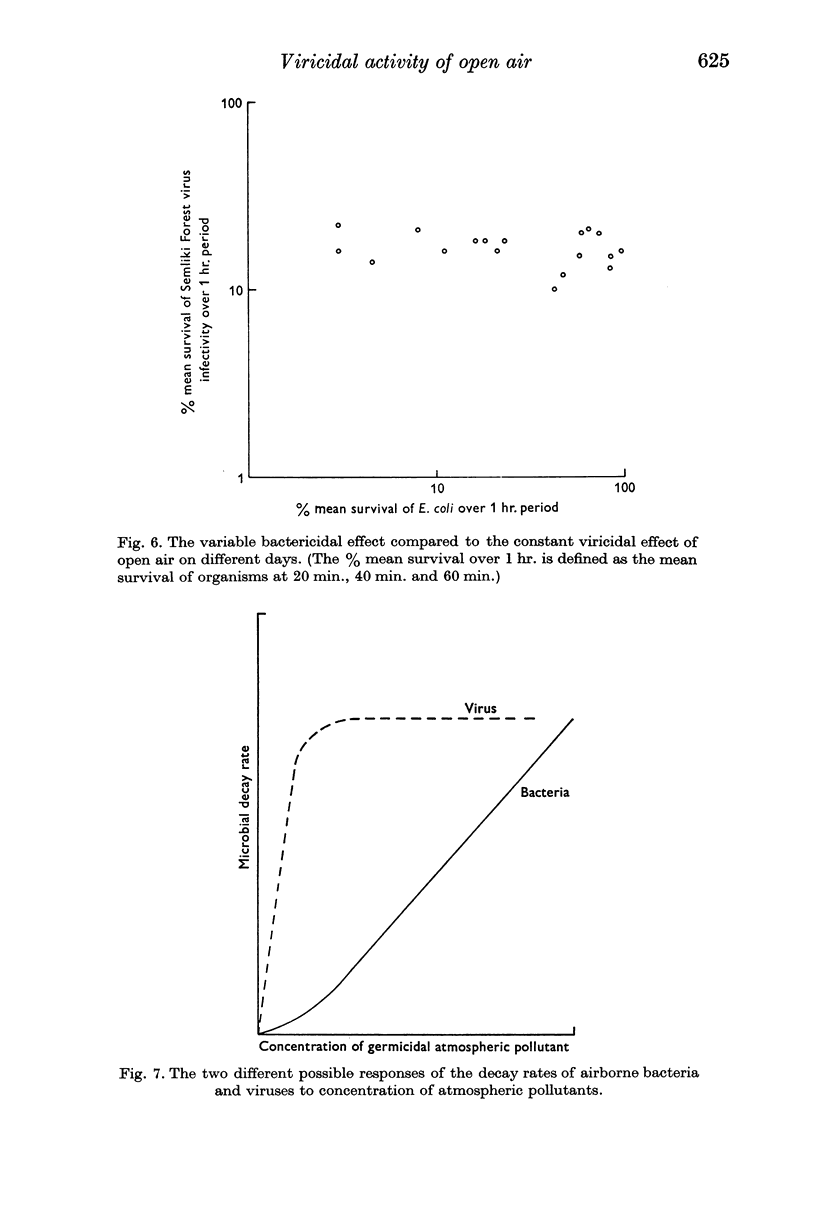
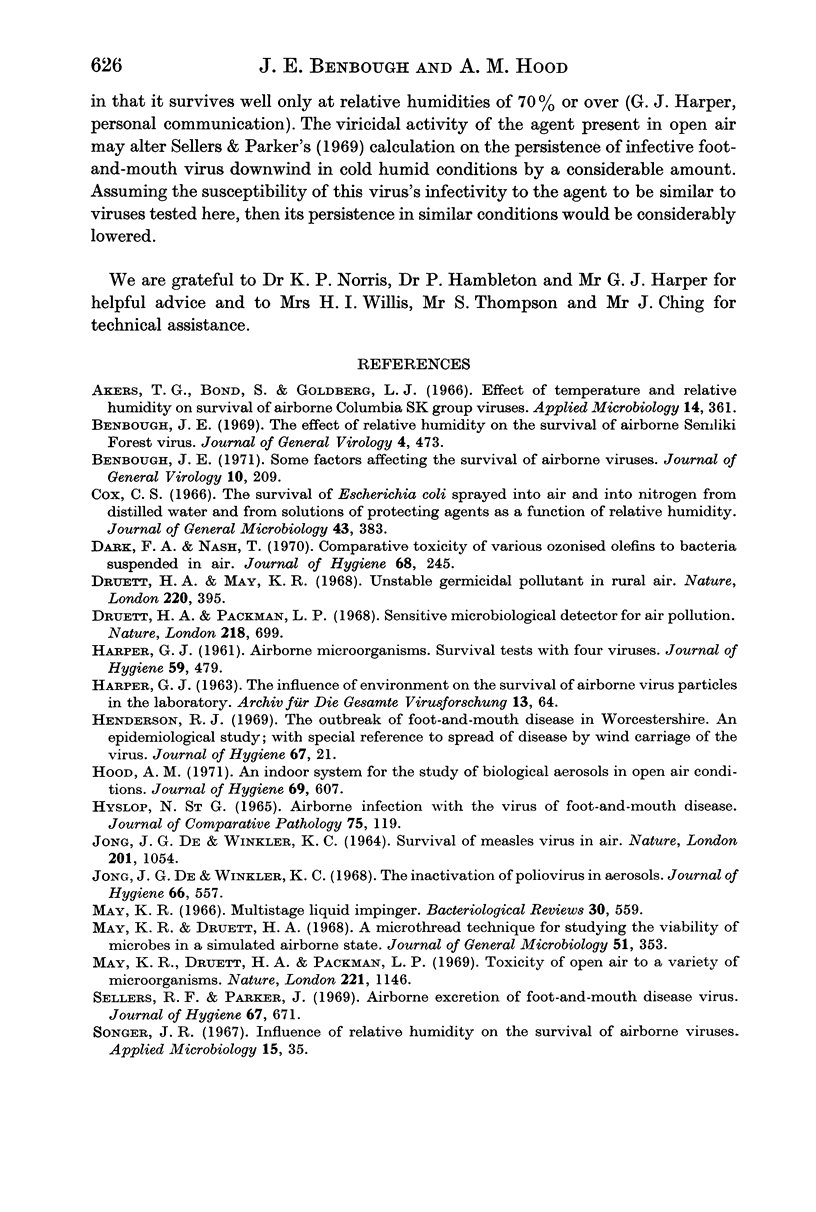
Selected References
These references are in PubMed. This may not be the complete list of references from this article.
- Akers T. G., Bond S., Goldberg L. J. Effect of temperature and relative humidity on survival of airborne Columbia SK group viruses. Appl Microbiol. 1966 May;14(3):361–364. doi: 10.1128/am.14.3.361-364.1966. [DOI] [PMC free article] [PubMed] [Google Scholar]
- Benbough J. E. Some factors affecting the survival of airborne viruses. J Gen Virol. 1971 Mar;10(3):209–220. doi: 10.1099/0022-1317-10-3-209. [DOI] [PubMed] [Google Scholar]
- Benbough J. E. The effect of relative humidity on the survival of airborne Semliki forest virus. J Gen Virol. 1969 Jun;4(4):473–477. doi: 10.1099/0022-1317-4-4-473. [DOI] [PubMed] [Google Scholar]
- Cox C. S. The survival of Escherichia coli sprayed into air and into nitrogen from distilled water and from solutions of protecting agents, as a function of relative humidity. J Gen Microbiol. 1966 Jun;43(3):383–399. doi: 10.1099/00221287-43-3-383. [DOI] [PubMed] [Google Scholar]
- DE JONG J. G., WINKLER K. C. SURVIVAL OF MEASLES VIRUS IN AIR. Nature. 1964 Mar 7;201:1054–1055. doi: 10.1038/2011054a0. [DOI] [PubMed] [Google Scholar]
- Dark F. A., Nash T. Comparative toxicity of various ozonized olefins to bacteria suspended in air. J Hyg (Lond) 1970 Jun;68(2):245–252. doi: 10.1017/s0022172400028710. [DOI] [PMC free article] [PubMed] [Google Scholar]
- Druett H. A., May K. R. Unstable germicidal pollutant in rural air. Nature. 1968 Oct 26;220(5165):395–396. doi: 10.1038/220395a0. [DOI] [PubMed] [Google Scholar]
- Druett H. A., Packman L. P. Sensitive microbiological detector for air pollution. Nature. 1968 May 18;218(5142):699–699. doi: 10.1038/218699a0. [DOI] [PubMed] [Google Scholar]
- HARPER G. J. Airborne micro-organisms: survival tests with four viruses. J Hyg (Lond) 1961 Dec;59:479–486. doi: 10.1017/s0022172400039176. [DOI] [PMC free article] [PubMed] [Google Scholar]
- HYSLOP N. S. AIRBORNE INFECTION WITH THE VIRUS OF FOOT-AND-MOUTH DISEASE. J Comp Pathol. 1965 Apr;75:119–126. doi: 10.1016/0021-9975(65)90002-2. [DOI] [PubMed] [Google Scholar]
- Henderson R. J. The outbreak of foot-and-mouth disease in Worcestershire. An epidemiological study: with special reference to spread of the disease by wind-carriage of the virus. J Hyg (Lond) 1969 Mar;67(1):21–33. doi: 10.1017/s0022172400041383. [DOI] [PMC free article] [PubMed] [Google Scholar]
- Hood A. M. An indoor system for the study of biological aerosols in open air conditions. J Hyg (Lond) 1971 Dec;69(4):607–617. doi: 10.1017/s0022172400021884. [DOI] [PMC free article] [PubMed] [Google Scholar]
- May K. R., Druett H. A. A microthread technique for studying the viability of microbes in a simulated airborne state. J Gen Microbiol. 1968 May;51(3):353–366. doi: 10.1099/00221287-51-3-353. [DOI] [PubMed] [Google Scholar]
- May K. R., Druett H. A., Packman L. P. Toxicity of open air to a variety of microorganisms. Nature. 1969 Mar 22;221(5186):1146–1147. doi: 10.1038/2211146a0. [DOI] [PubMed] [Google Scholar]
- May K. R. Multistage liquid impinger. Bacteriol Rev. 1966 Sep;30(3):559–570. doi: 10.1128/br.30.3.559-570.1966. [DOI] [PMC free article] [PubMed] [Google Scholar]
- Sellers R. F., Parker J. Airborne excretion of foot-and-mouth disease virus. J Hyg (Lond) 1969 Dec;67(4):671–677. doi: 10.1017/s0022172400042121. [DOI] [PMC free article] [PubMed] [Google Scholar]
- Songer J. R. Influence of relative humidity on the survival of some airborne viruses. Appl Microbiol. 1967 Jan;15(1):35–42. doi: 10.1128/am.15.1.35-42.1967. [DOI] [PMC free article] [PubMed] [Google Scholar]
- de Jong J. C., Winkler K. C. The inactivation of poliovirus in aerosols. J Hyg (Lond) 1968 Dec;66(4):557–565. doi: 10.1017/s0022172400028308. [DOI] [PMC free article] [PubMed] [Google Scholar]


